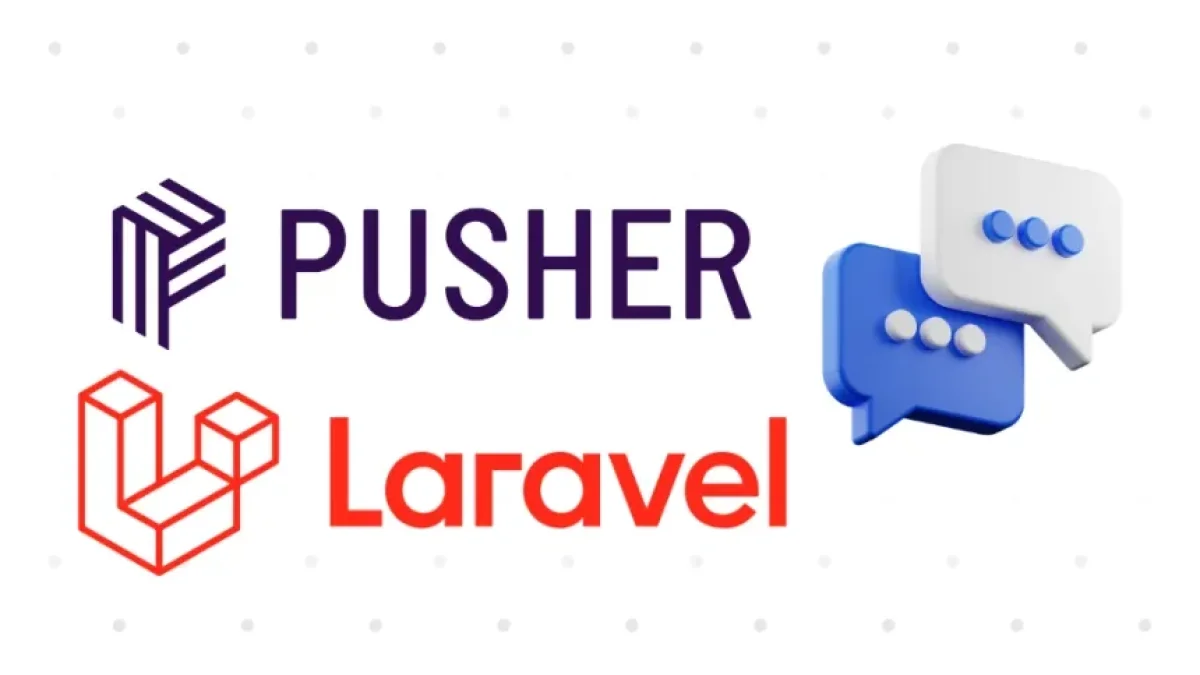How to Create a Real-Time Chat System with Laravel and Pusher


In today's world, real-time communication has become essential. Chat applications are a crucial part of this formula, and Laravel is one of the most popular frameworks for developing modern web applications. In this article, we will guide you step by step on how to create a real-time chat system using Laravel and Pusher, a messaging platform that facilitates the implementation of real-time functionalities.
Prerequisites
Before you start, make sure you have the following:
- Basic knowledge of PHP and Laravel.
- Node.js installed on your machine.
- Composer to manage your PHP dependencies.
- A Pusher account (you can register for free).
Step 1: Setting Up the Laravel Project
1.1 Create a New Laravel Project
First, you will need to create a new project in Laravel. Open your terminal and run the following command:
composer create-project --prefer-dist laravel/laravel laravel-chat
1.2 Configure the Environment
Navigate to your project directory:
cd laravel-chat
Copy the .env.example file and rename it to .env. Then, edit this file to set your database credentials and other necessary parameters.
1.3 Generate the Application Key
To use the broadcasting technology in Laravel, you need to generate an application key:
php artisan key:generate
Step 2: Installing Pusher
2.1 Create a Project in Pusher
- Go to Pusher and sign up.
- Create a new application and note down the App ID, Key, Secret, and Cluster that you will need later.
2.2 Install the Pusher Dependency
You need to install the Pusher library for PHP. From your project's terminal, run:
Read also
composer require pusher/pusher-php-server
Step 3: Configure Laravel to Use Pusher
3.1 Edit the .env File
Add the Pusher configurations to your .env file:
BROADCAST_DRIVER=pusher PUSHER_APP_ID=your_app_id PUSHER_APP_KEY=your_app_key PUSHER_APP_SECRET=your_app_secret PUSHER_APP_CLUSTER=your_app_cluster
3.2 Configure the config/broadcasting.php File
Make sure the Pusher configuration is correctly set up in the config/broadcasting.php file:
'pusher' => [
'driver' => 'pusher',
'key' => env('PUSHER_APP_KEY'),
'secret' => env('PUSHER_APP_SECRET'),
'app_id' => env('PUSHER_APP_ID'),
'options' => [
'cluster' => env('PUSHER_APP_CLUSTER'),
'useTLS' => true,
],
],Step 4: Create the Message Model
4.1 Generate the Model
Generate a model and a migration:
php artisan make:model Message -m
4.2 Define the Migration
Edit the migration created in database/migrations to define the structure of the messages table:
public function up()
{
Schema::create('messages', function (Blueprint $table) {
$table->id();
$table->string('user');
$table->text('message');
$table->timestamps();
});
}Don’t forget to run the migration:
php artisan migrate
Step 5: Create the Chat Controller
5.1 Create a Controller
Now, create a controller to handle chat actions:
php artisan make:controller ChatController
5.2 Implement the Method to Send Messages
In ChatController.php, add the following method:
use App\Models\Message;
use Pusher\Pusher;
public function sendMessage(Request $request)
{
$message = new Message();
$message->user = $request->user;
$message->message = $request->message;
$message->save();
$options = [
'cluster' => env('PUSHER_APP_CLUSTER'),
'useTLS' => true,
];
$pusher = new Pusher(
env('PUSHER_APP_KEY'),
env('PUSHER_APP_SECRET'),
env('PUSHER_APP_ID'),
$options
);
$pusher->trigger('chat', 'message', [
'user' => $message->user,
'message' => $message->message,
]);
return response()->json(['status' => 'Message sent']);
}Step 6: Configure the Routes
Open the routes/web.php file and add a new route for your controller:
Route::post('/send-message', [ChatController::class, 'sendMessage']);Step 7: Chat Frontend
7.1 Create the View
Create a new view called chat.blade.php in the resources/views folder and add the following HTML and JavaScript code:
<!DOCTYPE html>
<html lang="en">
<head>
<meta charset="UTF-8">
<meta name="viewport" content="width=device-width, initial-scale=1.0">
<title>Real-Time Chat</title>
<script src="https://js.pusher.com/7.0/pusher.min.js"></script>
</head>
<body>
<div id="chat-box"></div>
<input type="text" id="user" placeholder="Your name">
<input type="text" id="message" placeholder="Your message">
<button id="send">Send</button>
<script>
const pusher = new Pusher('your_app_key', {
cluster: 'your_app_cluster'
});
const channel = pusher.subscribe('chat');
channel.bind('message', function(data) {
const chatBox = document.getElementById('chat-box');
chatBox.innerHTML += `<p><strong>${data.user}</strong>: ${data.message}</p>`;
});
document.getElementById('send').onclick = function() {
const user = document.getElementById('user').value;
const message = document.getElementById('message').value;
fetch('/send-message', {
method: 'POST',
headers: {
'Content-Type': 'application/json',
'X-CSRF-TOKEN': '{{ csrf_token() }}'
},
body: JSON.stringify({ user, message })
});
}
</script>
</body>
</html>7.2 View the Application
Finally, run your Laravel server:
php artisan serve
Access http://localhost:8000/chat in your browser and test the chat system.
Conclusion
We have covered all the necessary steps to create a real-time chat system using Laravel and Pusher. Now you can customize and expand this functionality according to your needs. From adding authentication systems to improving the frontend design, the possibilities are endless. Good luck developing your chat application!



















